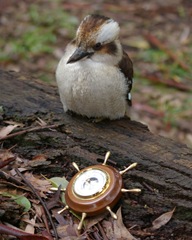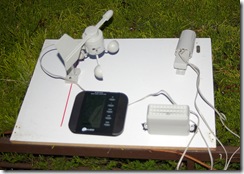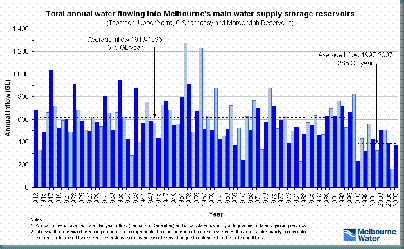 far enough away from structures and trees to ensure that any effects caused are minimised. The Nylex Rain Gauge 1000 instruction leaflet suggest the gauge should be located twice as far away as the height of nearby buildings and trees (ie if your house is approx. 3m high then the gauge should be 6m away!) I have two of these rain gauges (normally at different locations) but I have already noted that then can give different readings with only small separation. The main culprit is wind. nearby obstacles can cause shadows and eddies and if the gauges is too exposed eddies in strong winds can carry away up to 20% of the rain. Finding a good site is a standard suburban block can be a challenge and using two gauges (these can be homemade) at various locations is a good way to select best location to permanently mount your rain gauge.
far enough away from structures and trees to ensure that any effects caused are minimised. The Nylex Rain Gauge 1000 instruction leaflet suggest the gauge should be located twice as far away as the height of nearby buildings and trees (ie if your house is approx. 3m high then the gauge should be 6m away!) I have two of these rain gauges (normally at different locations) but I have already noted that then can give different readings with only small separation. The main culprit is wind. nearby obstacles can cause shadows and eddies and if the gauges is too exposed eddies in strong winds can carry away up to 20% of the rain. Finding a good site is a standard suburban block can be a challenge and using two gauges (these can be homemade) at various locations is a good way to select best location to permanently mount your rain gauge.Swalim (the Somalia Water & Land information Management) project has put their comprehensive Rainfall Observers Manual on the net.
The rain gauges that come in most weather station kits are based on tipping buckets. These are generally not as accurate at the conventional graduated cylindrical collectors, for a couple of reasons. A certain amount of rain is needed to tip the buckets and the rain event may finish before the bucket is tipped, where the rainfall is infrequent and low this can be an issue. Also the tripping mechanism may have considerable tolerance (most are made of molded plastic) and it may be wise to "calibrate" the readings against a convention gauge (using a few decent rain events of perhaps 2mm of more)







![Wollemi Pine [Wollemia nobilius] website](http://photos1.blogger.com/x/blogger2/1930/3564/240/362820/gse_multipart1061.jpg)

